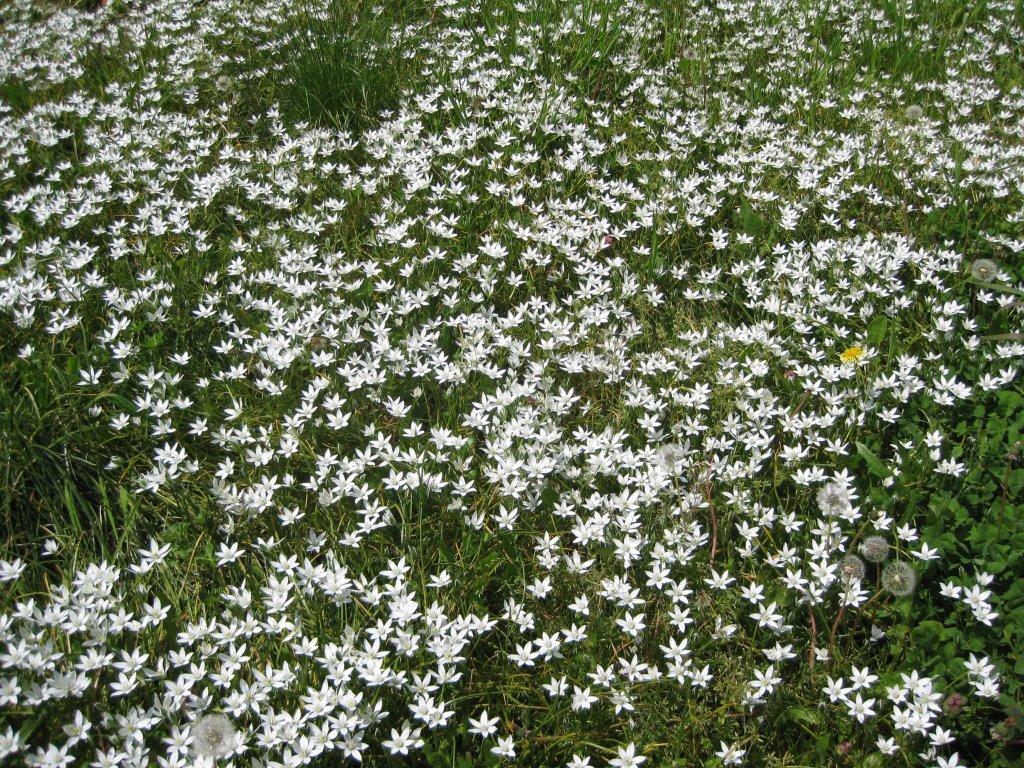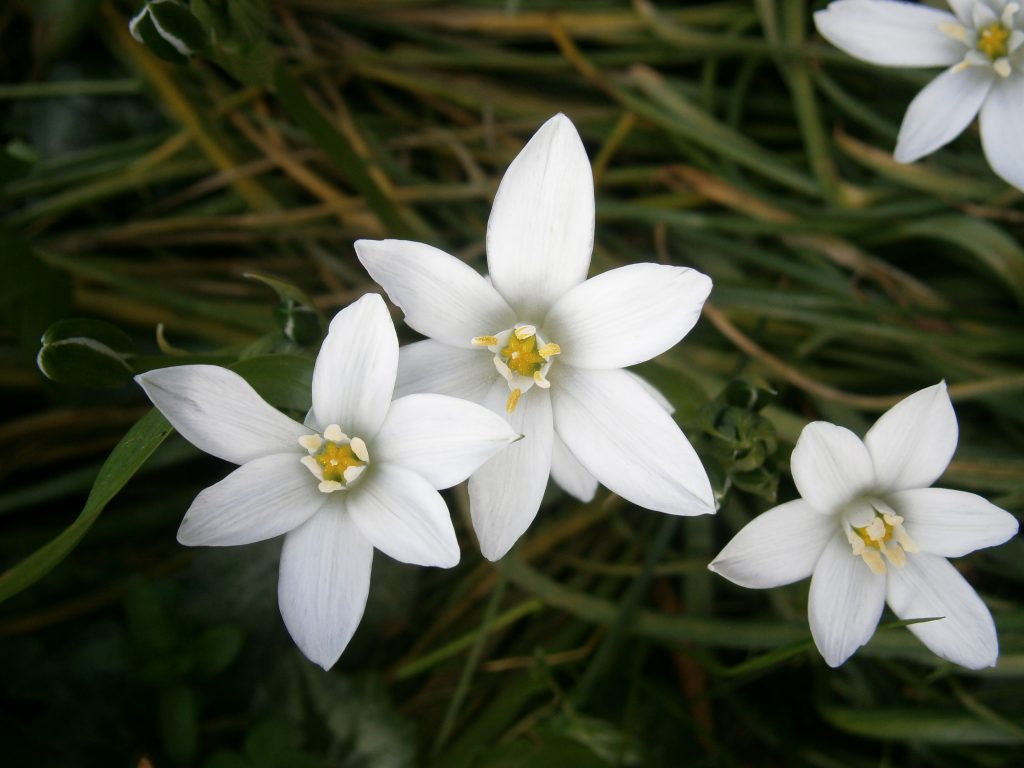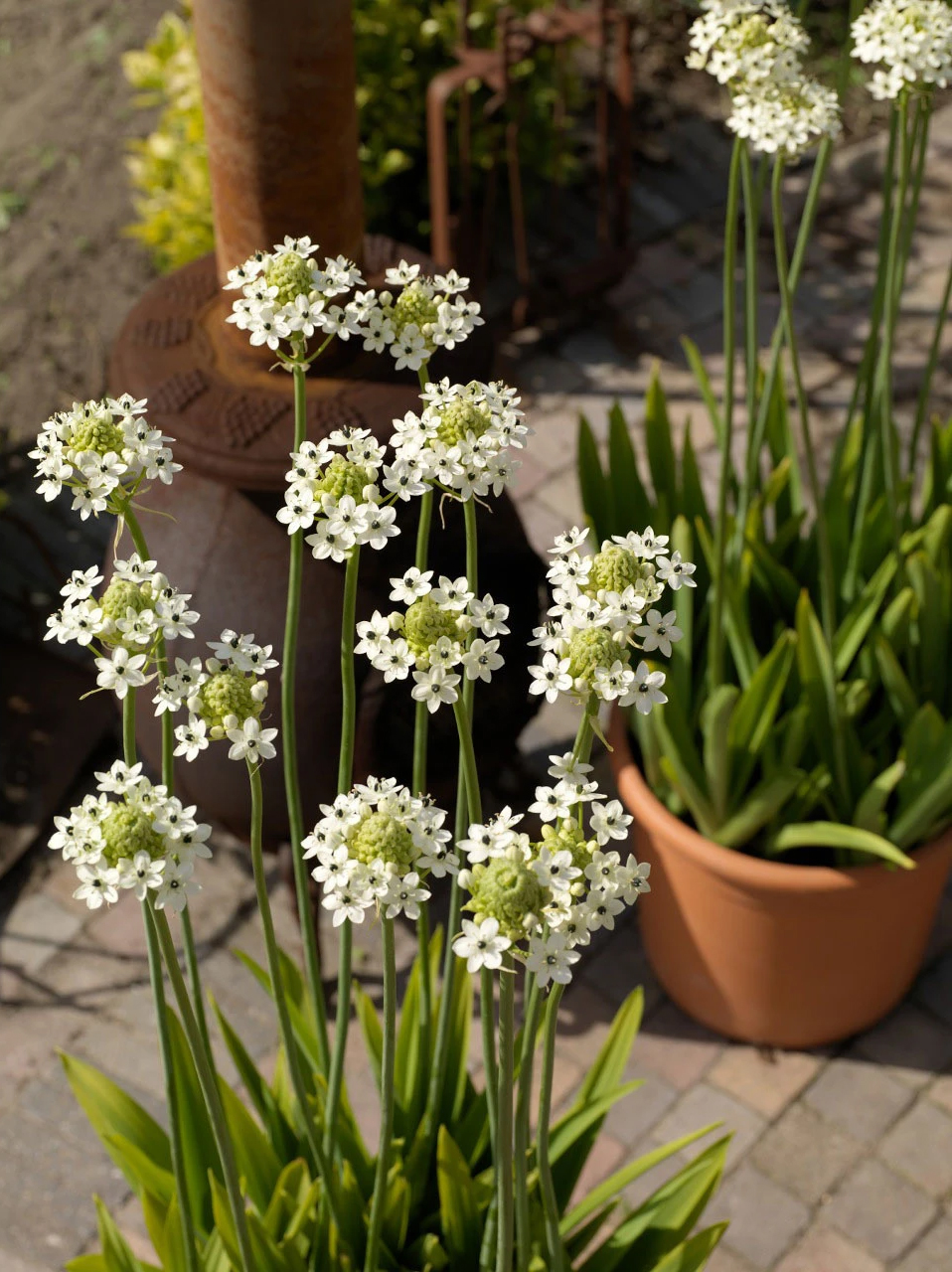Star-of-Bethlehem is the common name for the genus of plants Ornithogalum. The name is based on the flower’s star shape and is named after the Star of Bethlehem that appeared in the biblical account of the birth of Jesus. The Star of Bethlehem is a winter flower that blooms in late spring or early summer. They are available in white, yellow, purple, orange, and pink colors.
These blooms are native to the Meditarrenean region and grow wild across the countryside. Although they are not native to the United States, they have become naturalized in many areas, especially throughout Missouri.

Each flower head is thumb-sized with six petals each. The genus name Ornithogalum originated from the Greek language. 'Ornithos' means bird and 'gala' means milk. 'Bird milk' was used to describe these plants because they were deemed so incredible. The star-of-Bethlehem is the symbol of purity, atonement, and reconciliation.
These flowering plants typically bloom in late April or early May. They shoot up a foot-long spike with multiple flowers each, anywhere from 12 to 30 star-shaped blooms each. The flowers open with the sun each morning and close up at night.

Because of this biblical association, the star-of-Bethlehem embraces a meaning of purity, hope and happiness. This meaning makes it a common flower used in weddings and also as a romantic gesture.

Star-of-Bethlahem can be grown in flower beds but growers must be careful because the invasive plants can easily take over. They have a tendency to take over a lawn or garden and are very hard to get rid of. If the plants begin to overtake a lawn, the best way to stop it is to simply remove the flowers bulbs from the ground. Trying to cut back the plant will not stop it from overtaking and it is normally resistant to herbicides, so full removal is the easiest route to take.
Growing in containers helps keep these beautiful white blooms under control.

The flowers like full sun or partial shade and fertile soil that is moist but not saturated and muddy. If you grow the plant in an area that is too shady, the plant will produce fewer flowers and grow at a slower pace. The bulbs are fairly large and can produce many offsets. Due to this, they should be planted six inches apart to allow them room to grow. The plants visually resemble garlic plants but can be easily differentiated because they produce no odor when crushed.

These plants should not be grown around livestock and other animals because the bulbs and foliage contain toxic alkaloids. They should be grown in areas not accessible to dogs, cats, and other pets.






Leave a comment